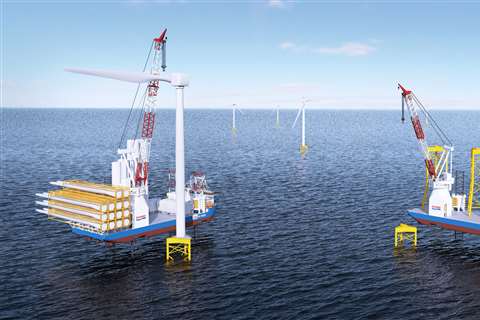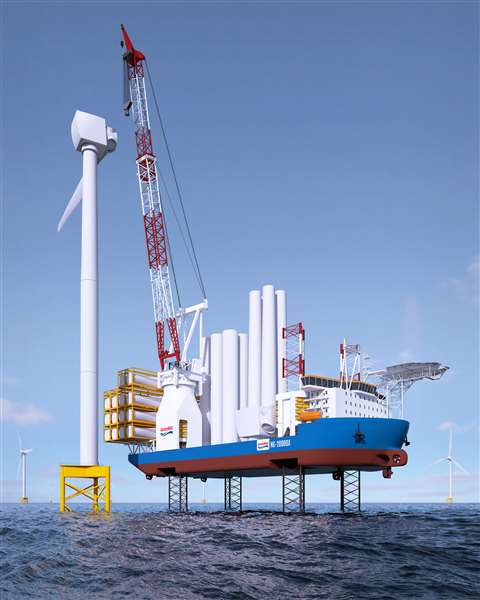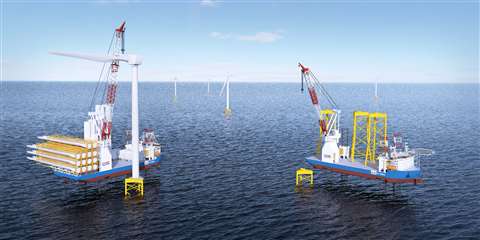
New GustoMSC jack-up for wind turbines
26 July 2017
New GustoMSC jack-up for wind turbines
GustoMSC, a design and engineering company operating in the offshore energy market, has developed what it claims is a solution for the installation of the next generation of larger and heavier wind turbine components and foundations: the NG-20000X.

GustoMSC said the NG-20000X has a self-propelled jack-up design, characterised by a high variable load and a large water-depth capability. Equipped with the GustoMSC integrated telescopic leg crane, the NG-20000X is capable of installing heavy foundations and, when the boom is fully extended, it has enough lifting height and capacity to install future generations of wind turbine components, GustoMSC claimed.
According to GustoMSC, the design of the NG-20000X is based on the company’s previous jacking systems that were used to install over 75% of the 2,600 turbines installed in the North Sea between 2010 and 2016. However, with the NG-20000X GustoMSC said it has scaled up the jack-up design and jacking system to cope with the increasing height and weight of the new generation of wind turbines producing over 10MW.
GustoMSC said the NG-20000X has a large unobstructed deck area and a variable load capacity of 16,500 tons. This, it claimed, means contractors can carry six complete sets of wind turbine components with a turbine weight of 1,000 tons. Alternatively, they can carry seven 900-ton jacket foundations per trip, thus optimising the cost per installed turbine or foundation.
GustoMSC claimed a key feature of the NG-20000X is the combination of a high hoisting height for wind turbine installation and a heavy load capability for foundation installation. In order to combine these two requirements GustoMSC said it developed the telescopic leg crane. By introducing a telescopic boom that features a high hook height when extended (1,250 metric tons at 160 metres) and an increased hoisting capacity when retracted (2,500 metric tons at 120 metres) GustoMSC said it has created a more economic crane design and increased the variable load available for operations.
GustoMSC added that a benefit of the telescopic leg crane is that the boom does not extend beyond the bow of the jack-up when it is stowed in the boom rest. This, it said, results in more favourable boom loading, less limitations during transit due to rough seas, and increased access to the lifting blocks. Furthermore, the retracted boom position also eliminates obstruction to the helideck, increasing uptime on helicopter operations, said GustoMSC. In addition to the boom rest between the legs in turbine installation mode, a second boom-rest position outside the forward leg can be provided, freeing up valuable deck area to load multiple tall objects, like jacket foundations.

The NG-20000X is fitted with a Variable Speed Drive (VSD) controlled jacking system. GustoMSC said the system enables safe, smooth and fully controlled jacking operations at all times. The low wear and tear characteristics of the system make it possible to control the jacking speed and loads on each individual leg accurately during the entire jacking process, including preloading, claimed GustoMSC. The company added that due to the high maximum elevated weight and the nature of the frequent operations of this wind turbine installation jack-up system, it is specifically designed for a design life of 20 years at a rate of 150 operations a year.

